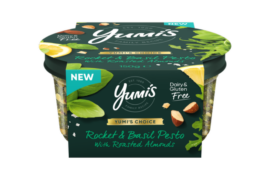Temperature therapy, also referred to as thermal therapy or thermotherapy, utilises the power of heat or cold to enhance overall wellbeing, along with assisting with more targeted health purposes. It works by influencing physiological responses in correlation to the deliberate application of various temperatures to the body. This practice dates back centuries, with ancient civilisations and cultures embracing the rejuvenating and invigorating benefits of hot springs, saunas, cold plunges and ice baths in the name of cultivating relaxation, vitality and strength.
Today, temperature therapy has emerged as an increasingly popular natural approach with myriad benefits for the modern lifestyle. Looking to supercharge your immune system, elevate your mental wellbeing, tame inflammation, amplify post-workout recovery or perhaps even enhance longevity? Temperature therapy is something to put on your radar.
Understanding your thermostat
To navigate the world of temperature therapy, it is key to understand the clever system your body employs to regulate its own temperature. Deep within our brains, a remarkable inner thermostat called the hypothalamus takes charge of the temperature control centre.
According to renowned neuroscientist Dr Andrew Huberman, the simplest way to think about the complexities of thermoregulation is that we actually have two distinct body temperatures, the outside “shell” (your skin) and the inside “core” (your organs, nervous system and spine). The temperature at your core is always warmer than at your shell. “Your brain is constantly sending out signals to your body on whether it should heat up or cool down, depending on the temperature of your shell,” he explains.
As the hypothalamus receives signals from the temperature sensors scattered throughout your body, it works very much like the kind of thermostat in a room that loops back to a heating or cooling system, with the goal of helping you maintain a steady internal temperature regardless of the outside world. If you get too hot, it activates cooling mechanisms, such as the widening of blood vessels near the skin’s surface and ramping up sweat production. On the flip side, if you find yourself getting too cold, it triggers heat-promoting responses like constricting blood vessels, shivering for warmth generation and mentally prompting us to seek out shelter or extra clothing. This intricate feedback loop between the shell and the core, which is orchestrated by the hypothalamus, aims to ensure our body hovers within a narrow, healthy temperature range of typically around 37°C.
Uncomfortable, simple, powerful
There is not much leeway either side of your body’s ideal temperature of approximately 37°C, so as you dive into temperature therapy, be prepared to get outside of your comfort zone as it calls for varying levels of (safe) extremes. Though you may have to push past some mental blocks, according to Benjamin Berry, a breathwork and cold exposure facilitator, deliberate temperature exposure empowers people to take control of their health, with the beauty of it being how straightforward yet simultaneously impactful it is.
“In my work, I provide an opportunity for people to discover something so simple yet so powerful: putting ourselves in uncomfortable temperatures and consciously using our own breath,” he says of the temperature therapy practices he shares that can often be a catalyst for a deeper passage to personal wellness. “Quite often, this is the initial door people walk through on their journey to self-responsibility in their health.” It’s this driving force that underpins Berry’s purpose; “I’ve seen some incredible transformations when people use heat or cold as part of their treatment or recovery plans, ranging from those managing disease to it playing a pivotal role in clients’ mental health programs.”
Types of temperature therapy
While the base concept of deliberate temperature exposure is wonderfully uncomplicated, it still offers myriad forms and methods through which you can experience various therapeutic benefits. Understanding more about these, along with the science behind variables such as time and degrees can help you discover how and when to integrate temperature therapy into your personal wellness protocol.
Heat therapy
Heat therapy involves deliberate heat exposure, usually of 40°C or more, to the whole body or localised parts of the body, which is known to increase blood flow, relax muscles, promote healing, assist detoxification pathways, reduce stress or provide targeted support for certain injuries.
One of the most popular ways to integrate this is through the use of saunas between 70 and 100°C, such as traditional dry heat wooden saunas or infrared saunas. With their elevated temperatures, saunas provide a full-body heat experience that often induces sweating and, when done at the correct temperature and duration, can even have profound impacts such as releasing human growth hormone into the brain and body up to 16-fold. If you don’t have access to a sauna or it is out of your budget, another technique to raise your body temperature is exercising in layers to trap body heat during physical activity. Common methods of localised heat therapy include heat packs, heating pads, warm towels and heat lamps.
Heat therapy also has the ability to protect cells from damage and improve cellular function through the activation of heat shock proteins, which have further been proposed to support longevity. Due to these mechanisms, regular heat therapy has been shown to improve cardiovascular health, and is associated with improved blood pressure, heart rate and blood vessel function.
Cold therapy
Cold therapy encompasses various techniques to induce therapeutic cooling effects on the body. Gaining a lot of attention over recent years in the wellness space, ice baths involving immersion in cold water typically supplemented with ice or kept chilled at between 10° and 15°C cause rapid whole-body cooling, which aids in reducing muscle soreness, swelling and inflammation, due to the constriction of blood vessels and analgesic effects.
Cryotherapy, in liquid nitrogen chambers or through localised devices, is another method of exposing the body to extremely cold temperatures that has gained attention for its potential benefits in pain management, injury recovery and reduction of inflammation.
More readily accessible methods include exposing the body to cold water through cold showers, activating cutaneous cold receptors and triggering vasoconstriction, which can boost circulation and kick the sympathetic nervous system into gear. Meanwhile, cold compresses or ice packs can be applied to targeted localised areas to initiate reduced tissue temperatures, bringing anti-inflammatory effects and pain relief.
Subjecting the body to temperatures below 15°C also has the ability to awaken brown adipose tissue (BAT), a unique type of fat that ignites your metabolism by burning calories to generate heat — in others words, the kind of fat you want to have in your body. This boost to your metabolic health may even reduce your risk of heart disease and diabetes, thus promoting longevity. Additionally, the aftermath of cold exposure activates the parasympathetic nervous system, bringing a wave of relaxation, promoting mental wellbeing and even enhancing the quality of your sleep.
Contrast therapy
As the name suggests, contrast temperature therapy is a technique that harnesses the power of the contrasting states of alternating between hot and cold stimuli. By subjecting the body to opposing temperature extremes, you essentially get the best of both worlds, with an extra edge. While the application of heat triggers vasodilation, promoting increased blood flow and muscle relaxation, in contrast the cold component induces vasoconstriction, constricting blood vessels and reducing inflammation. When combined, the interplay of temperature extremes enhances circulatory efficiency, facilitating the removal of waste products and aiding in tissue healing. Typically, a contrast therapy session begins with a heat component followed by a cold one, and involves three to five cycles, with each component lasting a few minutes. However, there are many different ways to engage contrast temperature therapy, with the essential factor simply being alternating safely between the extremes.
What happens to your chemistry?
In the words of Huberman, undergoing heat or cold therapy essentially uses the stimulus to “initiate a large cascade of biological processes that improve multiple aspects of [overall] health.” The changes that can be observed in your body and brain during thermotherapy show how effective it really is as a catalyst for positive changes.
When exposed to environments of extreme heat such as saunas, your brain chemistry is subject to a series of changes, impacting neurotransmitters and hormones. High temperatures stimulate the release of feel-good endorphins, while increasing brain-derived neurotrophic factor (BDNF). BDNF supports neuronal growth and plasticity, and as a result its upscale may enhance cognitive ability and memory centres in the brain. Stress caused by heat exposure also activates the sympathetic nervous system (responsible for the “fight or flight” response), inducing norepinephrine to be released, which improves alertness and focus.
Similarly, during cold therapy endorphins and pleasure molecule dopamine are released, and the sympathetic nervous system is also activated, providing a surge in norepinephrine. Such neurochemical changes which occur during both hot and cold extremes may have positive effects on mental performance, positive mood, stress management in daily life and overall wellbeing.
In one a study referred to as “Brain Over Body”, legendary “iceman” Wim Hof was able to prove that the central nervous system (CNS) rather than the body was responsible for mediating one’s response to cold exposure, indicating that humans may be able to influence the autonomic system. Part of Hof’s signature method involves controlled breathing, which alters bodily chemistry to assist in adapting to the cold, allowing for greater tolerance and extended exposure.
Embracing heat and cold in your daily life
An effective temperature therapy protocol does not need to be expensive or time-consuming. Huberman coined the concept of the very achievable “Soeberg Principle”, named after Dr Susanna Soeberg’s in-depth studies of cold and heat therapy on the body. This data showed that for maximum metabolic effects always end on cold, and that the minimum threshold needed to gain the primary benefits of these therapies are as little as 11 minutes of cold and 57 minutes of heat per week, which can be broken up throughout the week.
“A large part of heat and cold therapy is simply adapting to uncomfortable situations,” explains Berry. “We spend a lot of our life expending energy to make ourselves more comfortable, so the easiest way to integrate either practice is to consciously stop yourself from being comfortable all day.” He suggests doing things like finishing your showers on cold water only, swimming in the ocean year round, and skipping the air conditioning in summer. Small rituals like these will also prepare you take the next step into either a hot sauna or an ice bath, or perhaps help you go deeper into your temperature therapy practise.
Is it for everyone?
“Generally speaking, heat and cold exposure practices are accessible to a broad spectrum of the population, when individual vitality is respected. I find there is often some benefit that can be gained regardless of a person’s current health status, if the correct measures are in place,” says Berry. “For example, a person with low vitality (ie who is chronically ill) will see more benefit from a temperature closer to their body temperature. There are so many variables, so seeking the knowledge of a professional is always recommended.”
It is definitely not for everyone though. Some basic contraindications that exist for hot, cold and contrast temperature therapy include people with a history of heart issues or cardiovascular disease, previous epileptic episodes, medicated high blood pressure, pregnancy and deep vein thrombosis. Those with kidney failure, among other health conditions, should also avoid cold exposure.
Berry also advises that there are some conditions with which you can still try temperature therapies, with extra caution, saying, “People who suffer from migraines should take extra care in both heat and cold environments, and should most definitely start with mild temperatures. Similarly, those with skin conditions should monitor their condition whilst experimenting with mild temperatures first.”
Whether you choose heat, cold, both at different times or the dance between them in contrast therapy, deliberate exposure offers a way to engage with the therapeutic magic of temperature in a way that harnesses the innate wisdom of our body’s thermostat system, bodily functions and brain chemistry to discover the way it can elevate your whole state of wellbeing.











